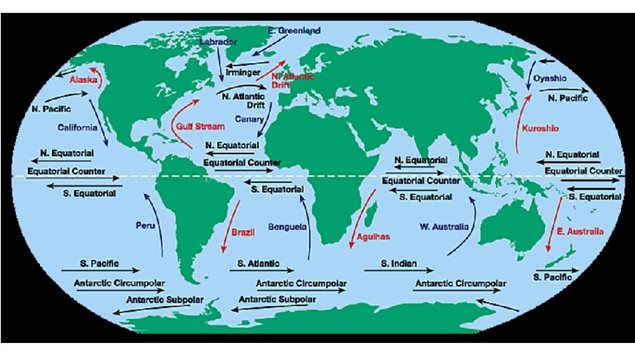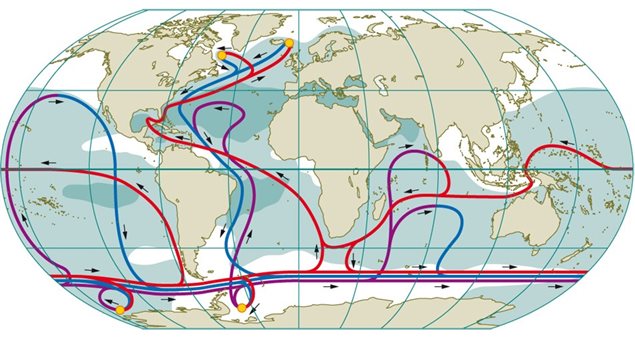“What is the 40-year lag, and what is its affect on oceans?”
To answer the question, we contacted Boris Worm (PhD).
He is a professor of marine conservation biology at Dalhousie University in Halifax Nova Scotia and heads the Worm Marine Conservation Lab.
Listen
A lag in time is the time between when something occurs, and how long it takes for a reaction to occur from that event.
Take a supertanker for example; you turn the ships wheel, that turns the rudder, but nothing seems to happen. The ship is so huge it can seemingly take quite some time and distance before there is a noticeable turning. This is a lag between the initial event, turning the wheel and rudder, and the reaction, turning the ship.
In the case of the ocean, it is so huge that environmental effects are absorbed for years, decades even before there is a reaction.
Adding heat to the oceans is also modifying patterns of ocean currents, which if changed too much, will have serious climactic consequences in places around the world. As for natural fluctuations like El Nino and La Nina, he says added heat can modify their typical fluctuations and exacerbate their effect on the world climate patterns.


ABOVE: The worldwide ocean currents of the thermohaline circulation system are extremely complex. The flow of cold, saline surface water (blue) downward and toward the equator can only be clearly recognized in the Atlantic. Warm surface water (red) flows in the opposite direction, toward the pole. In other areas the current relationships are not as clear-cut as they are in the Gulf Stream system (between North America and Europe). The Circumpolar Current flows around Antarctica, and does so throughout the total depth of the water column. The small yellow circles in the polar regions indicate convection areas. The dark areas are characterized by high salinity and the white areas by low salinity. Salty areas are mostly located in the warm subtropics because of the high evaporation rates there. Radioactive carbon-isotope dating of the deep waters indicates that from the time of sinking into the deep until its return to the surface, a period of several hundred or even up to 1000 years will pass.
Professor Worm says what has been happening is that the ocean has been absorbing about 90 percent of the heat caused by greenhouse gas. He says because of that, the ocean has had a mitigating effect on atmospheric warming. But he says the ocean’s capacity to absorb heat is nearing its limit.
Dr Worm says the atmospheric warming we are experiencing now is the result of CO2 emissions of a few decades ago, as the ocean slows down its mitigating ability.
He says the estimates for the oceans to reach heat-absorbing “capacity” have ranged from 25 to 60 years before the ocean begins to be unable to absorb heat. Some scientists have taken the middle point as an “average” which has become the so-called 40-year lag.
additional information







For reasons beyond our control, and for an undetermined period of time, our comment section is now closed. However, our social networks remain open to your contributions.